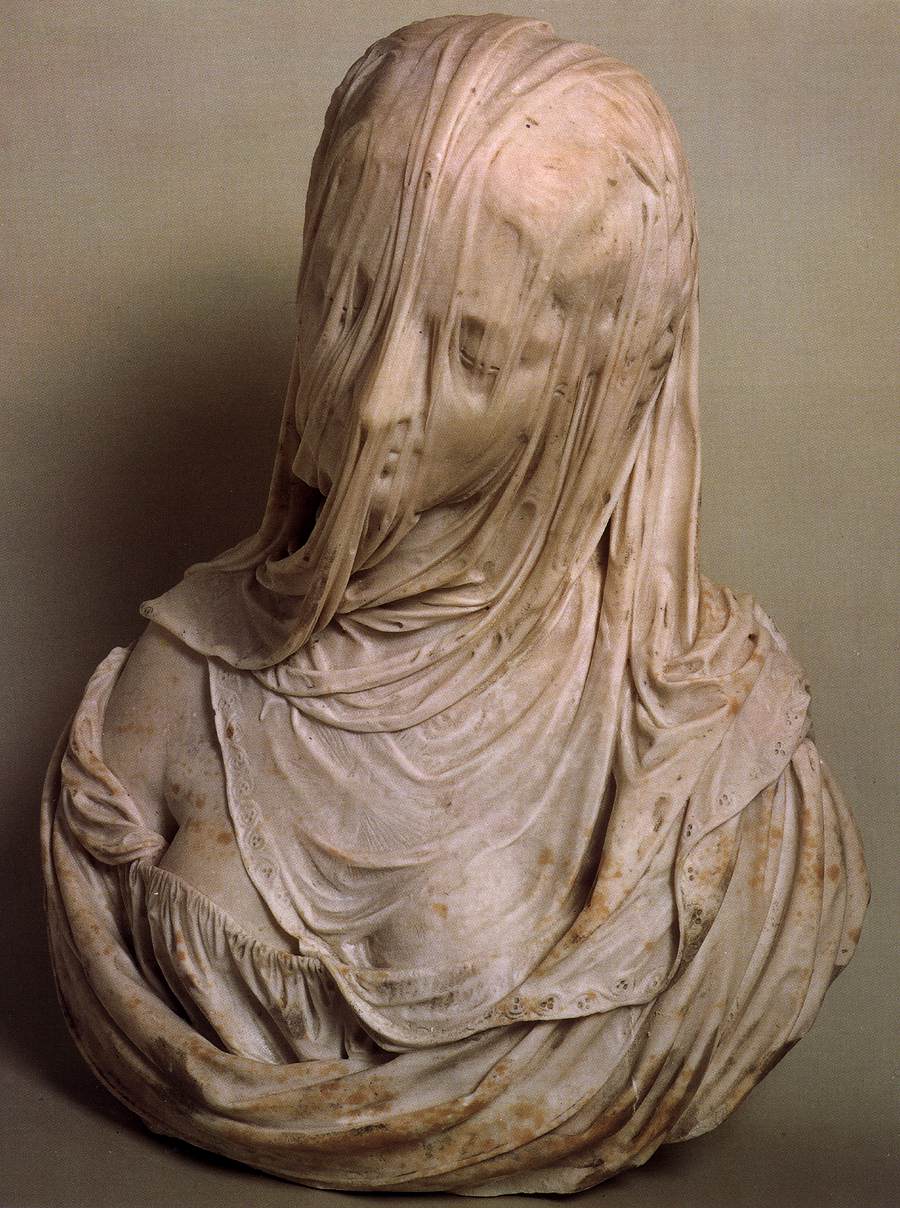
Antonio Corradini’s Veiled Sculpture things worth describing
Corradini's Bust of a Veiled Woman is first documented at Ca' Rezzonico in 1889 and it is believed to be part of the original decoration of the palace's great hall (first-floor portego ). The bust does not show any visible sign of the mould's parting lines and should thus be regarded as an extremely rare example of Corradini's plaster models.

Veiled Figures Carved Out of Marble by Antonio Corradini » TwistedSifter
Antonio Corradini (19 October 1688 - 12 August 1752) was an Italian Rococo sculptor from Venice. He is best known for his illusory veiled depictions of the human body, where the contours of the face and body beneath the veil are discernible.

Femme voilée Musée du Louvre, Paris Antonio Corradini Rococo, Naples
Antonio Corradini's Veiled Sculpture by lindsey | Aug 1, 2013 | art history, sculpture | 1 comment Antonio Corradini lived from 1668 until June 1752, and he worked as a Rococo sculptor in Venice. There's not a lot known about him, but he's most famous for his veiled women, and it's not hard to see why.

CORRADINI, Antonio Bust of veiled woman From the Academi… Flickr
Antonio Corradini, Veiled Woman Author Antonio Corradini (Este 1688 - Napoli 1752) Date 1720 circa Museum Ca' Rezzonico Location Sala Guardi Technique Carved marble Size h 54 cm Inventory Inv. Cl. XXV, n. 1089 Venice, Ca' Rezzonico [.]

Antonio Corradini. Veiled woman.
Modesty was the last in Corradini's series of veiled female nudes, a subject he developed and refined throughout his career. His mastery of the medium of marble is seen in the increasingly skilled representation of seemingly weightless cloth over human flesh in his commissioned pieces.

Antonio Corradiniâ s Veiled Women Скульптура бернини, Греческое
Media in category "Veiled Woman (The Faith) by Antonio Corradini (Louvre)" The following 16 files are in this category, out of 16 total. Allégorie de la Foi d'Antonio Corradini (Grand Palais, Paris) (45042839182).jpg 5,294 × 3,971; 9.54 MB. Allégorie de la Foi, Antonio Corradini (30660025997).jpg 3,024 × 4,030; 3.43 MB.

Veiled Woman (Allegory of Faith) early to mid1700 Antonio Corradini
Sculpture of veiled woman by Antonio Corradini, 1668-1752. Note: We can imagine this baroque representation as the action of dysfunctional fascial tissue impairing the patient's proper muscular.
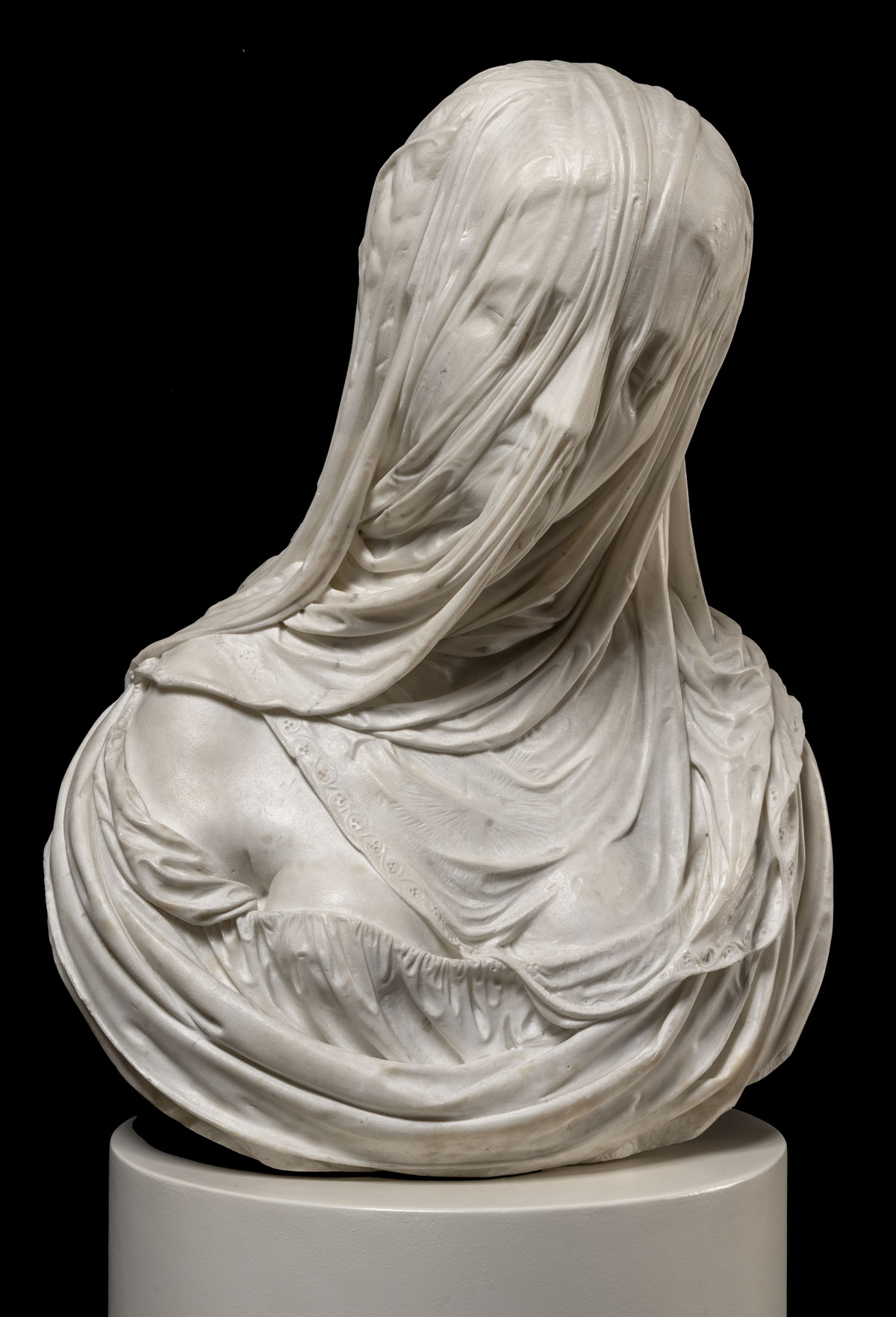
Antonio Corradini, Veiled Woman Fondazione Musei Civici di Venezia MUVE
Antonio Corradini (1688 - 1752) was a Venetian Rococo sculptor. Corradini was born in Venice and worked mainly in the Veneto but also completed commissions across Europe, living for periods of his life in Germany, Vienna and Naples—where he died—shortly after completing Modesty (below), arguably his most celebrated work.
The Veiled Virgin by Giovanni Strazza. Imagine being able to make stone
Google Arts & Culture features content from over 2000 leading museums and archives who have partnered with the Google Cultural Institute to bring the world's treasures online.
+Padova+1668-1752.jpg)
Загадки истории. Спорные факты и домыслы. Откуда город? Глава 20. Ещё
Antonio Corradini's Veiled Woman or Marble Corradini Sculpture is a masterpiece of Rococo art. The sculpture portrays a female figure in a veil, revealing the details of the human form beneath. The sculpture is housed in the Palazzo Barberini, Rome, and is a testament to Corradini's technical skill in creating veiled sculptures.

Paris Veiled Woman (detail), Antonio Corradini, the Louvre… Flickr
The Vestal Virgin Tuccia (Italian: La Vestale Tuccia) or Veiled Woman (Italian: La Velata) is a marble sculpture created in 1743 by Antonio Corradini, a Venetian Rococo sculptor known for his illusory depictions of female allegorical figures covered with veils that reveal the fine details of the forms beneath. The work is housed in the Palazzo Barberini, Rome.

Verdad velada de Antonio Corradini (1752) David Pérez Pol Ersilias
In these veiled women, I see the strength and gumption of each woman, as they show themselves in flesh.. I can't get over how Corradini chiselled a filmy veil over a woman's soft body out of stone. It's magic. shondabrock on October 1, 2014 at 4:58 pm Reblogged this on shonda brock and commented:

Pin on ESCULTURA
Veiled woman by Antonio Corradini ca. 1743 @National Gallery of Ancient Art in Barberini Palace Lena 78 subscribers Subscribe Subscribed 1 2 3 4 5 6 7 8 9 0 1 2 3 4 5 6 7 8 9 0 1 2 3 4 5 6 7.
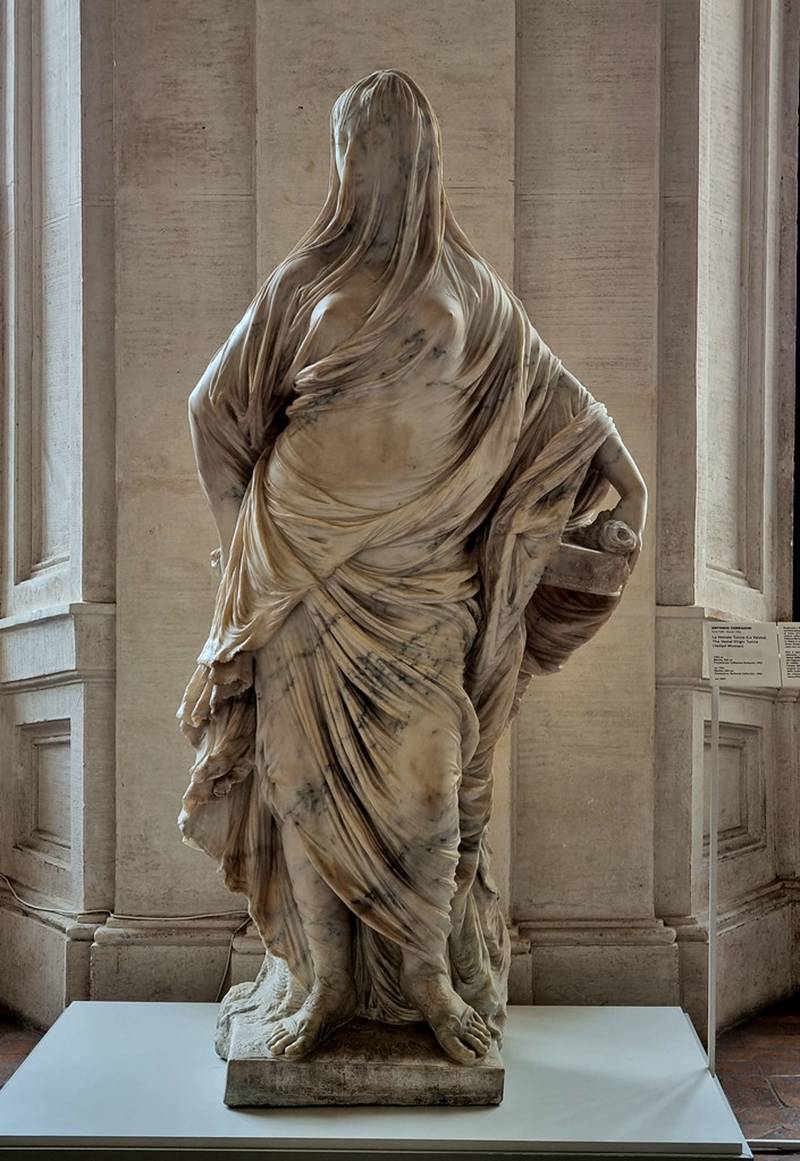
The Art of Veiled Sculptures A Cloaked Beauty Unveiled
This bust belongs to a tradition of veiled marble figures carved to virtuosic effect in Italy since the 18th century. Prominent examples were made by Antonio Corradini (1668-1752) and Giuseppe Sanmartino (1720-1793), both for the Cappella Sansevero in Naples, and by Innocenzo Spinazzi (1726-1798), active in Florence.
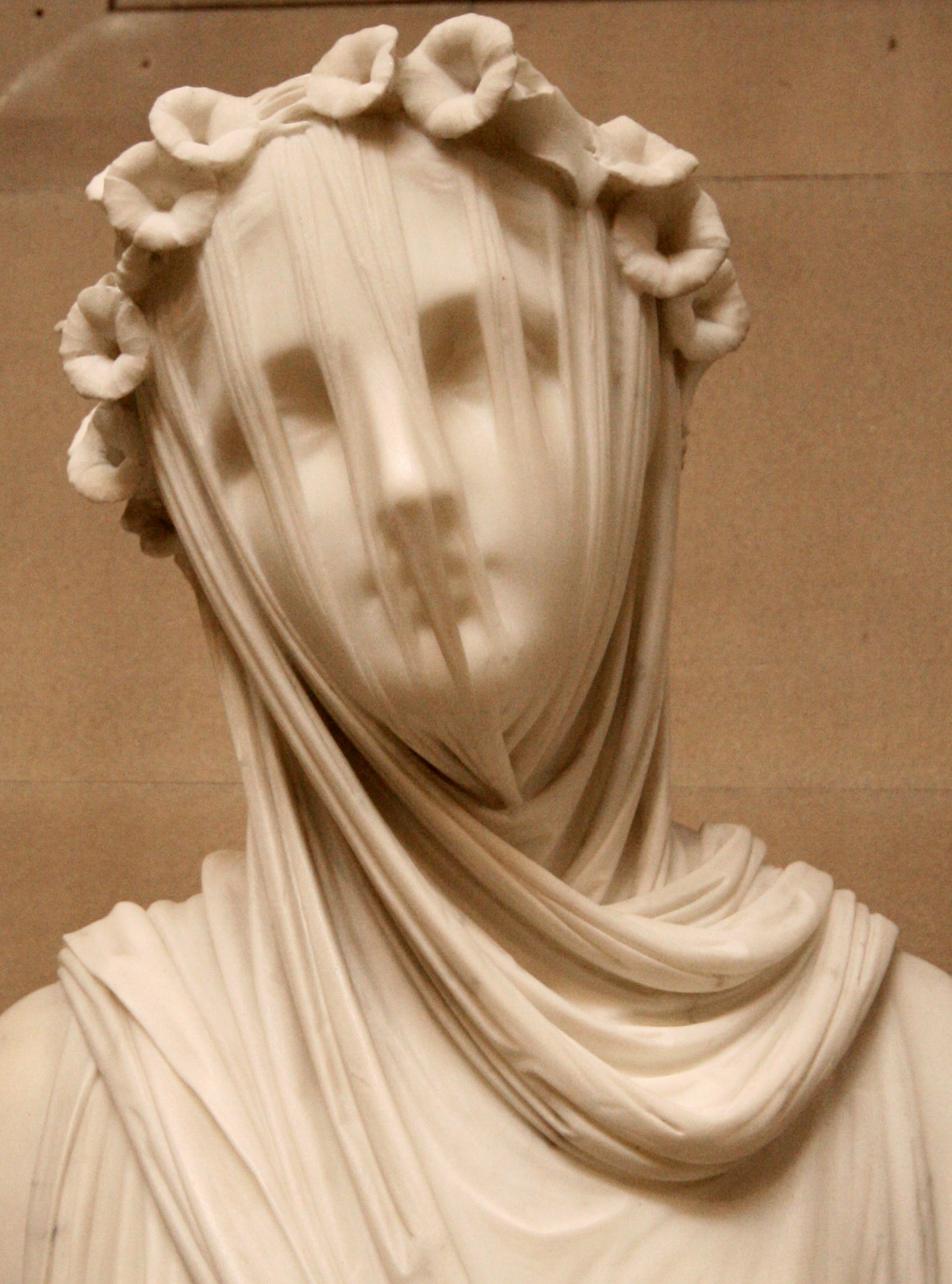
Antonio Corradini peoplecheck.de
Bust of a Veiled Woman (Puritas) 1717-25. Marble. Museo del Settecento Veneziano, Ca' Rezzonico, Venice. Though Corradini's desire to display his technical skill at times outstripped his inspiration, his virtuosity in marble was remarkable. This bust may be compared with his masterpiece, the statue of Modesty in the Sansevero chapel in Naples.

Antonio Corradini (Este 1668 Naples 1752), Rococo sculptor
Antonio Corradini (Este 1688 - Naples 1752) Veiled Woman (The Vestal Virgin Tuccia) 1743. Marble. 230 cm. Palazzo Barberini. Inv: 2257. The theme of the veiled woman runs through the sculptor's whole career. This version, carved in 1743 during his stay in Rome, aroused the wonder of art-lovers and the general public.